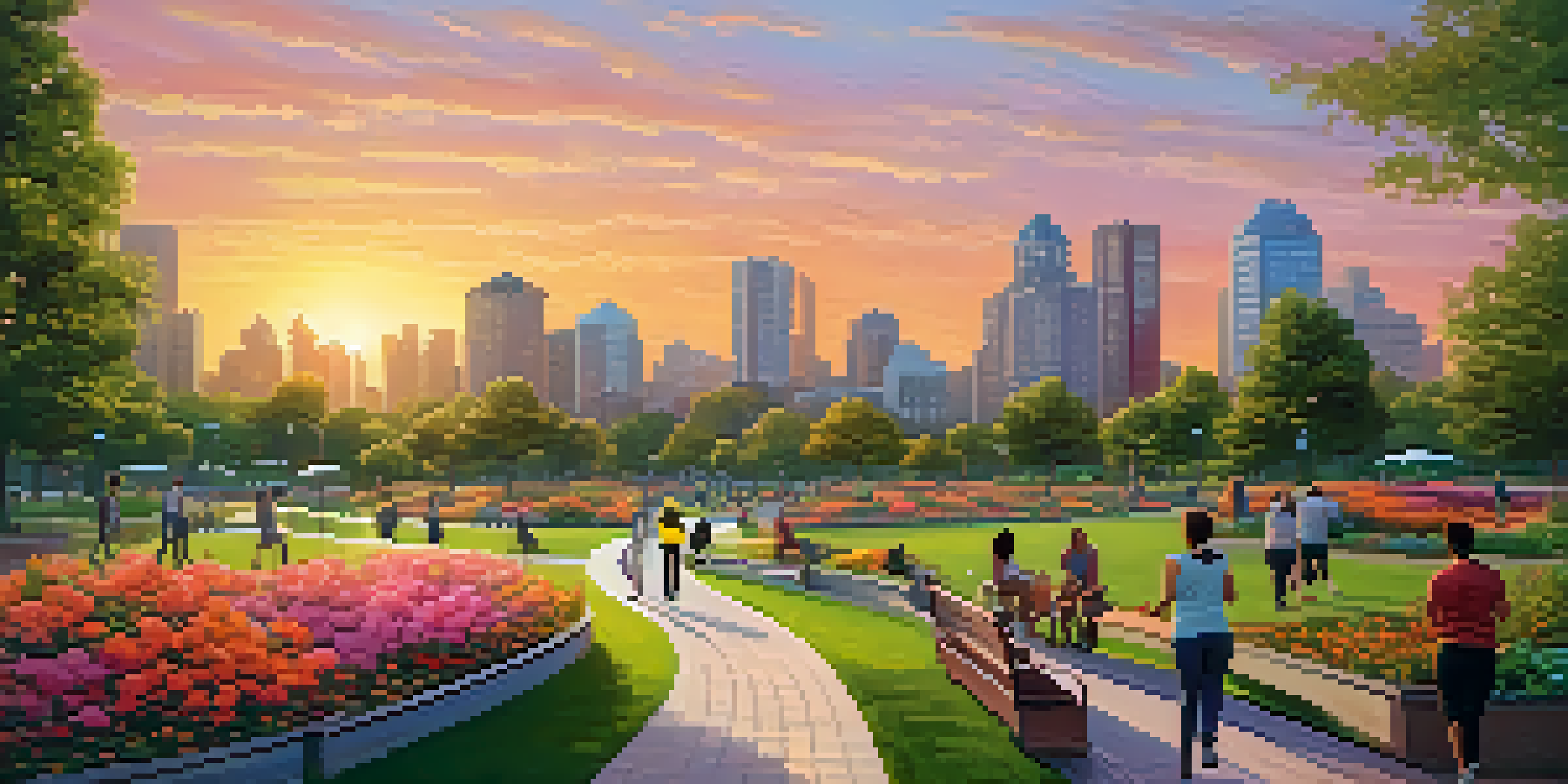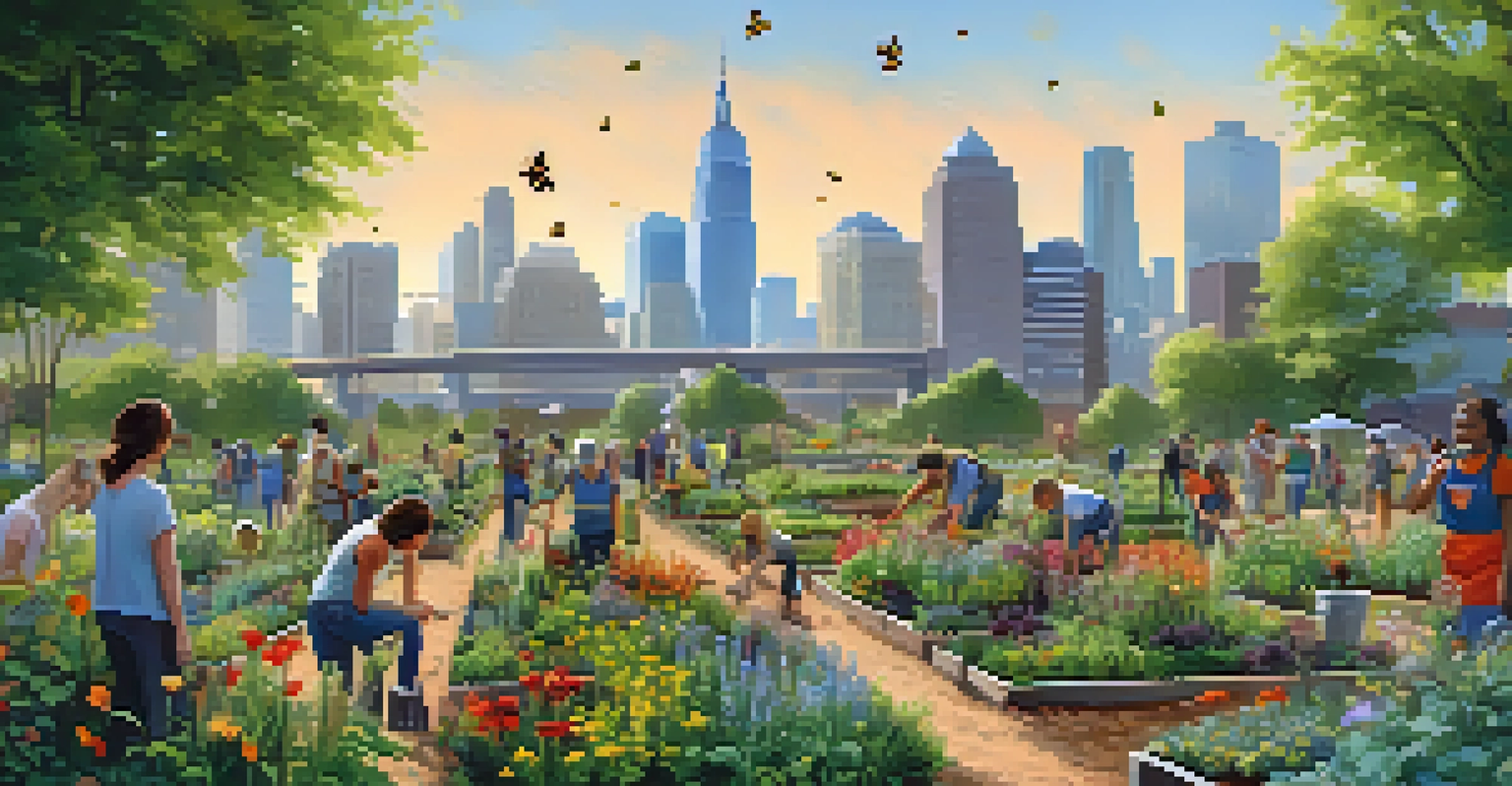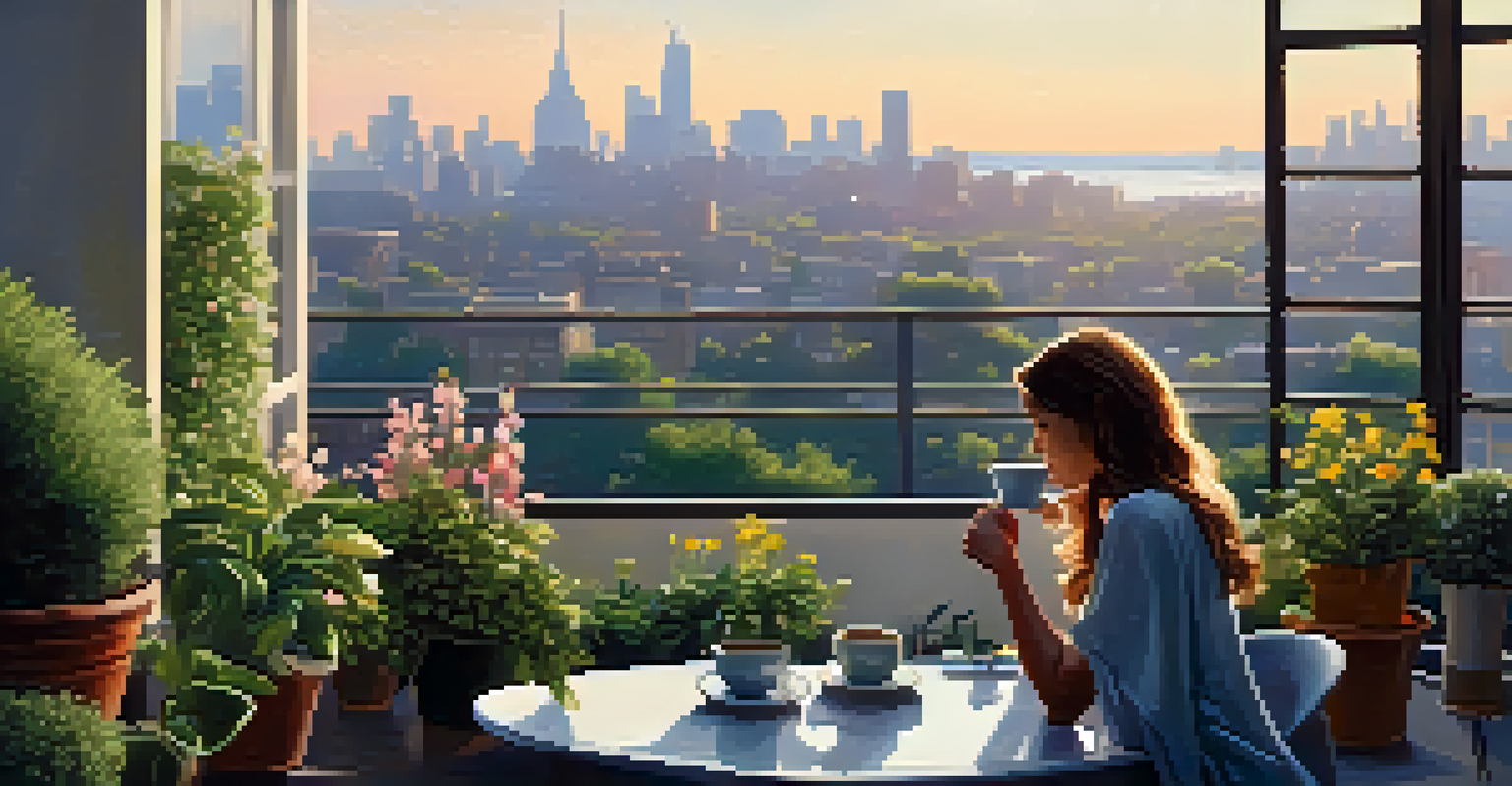The Importance of Green Spaces for Urban Living

Green Spaces: A Breath of Fresh Air in Urban Environments
In the hustle and bustle of city life, green spaces serve as essential oases. They provide fresh air, reduce pollution, and offer a much-needed escape from the concrete jungle. When we step into a park or garden, we often feel an immediate sense of calm, thanks to the greenery surrounding us.
In every walk with nature one receives far more than he seeks.
These natural areas not only improve our physical health by promoting outdoor activities like walking or jogging but also have significant mental health benefits. Studies have shown that spending time in nature can reduce stress, anxiety, and depression. It’s as if these spaces have a magical quality, inviting us to relax and recharge.
Moreover, green spaces can enhance our cities' overall aesthetic appeal, making them more inviting. When neighborhoods are dotted with trees and parks, they create a vibrant atmosphere that attracts residents and visitors alike. This connection to nature enhances our quality of life, making urban living more enjoyable.
Boosting Community Engagement Through Green Spaces
Green spaces are not just about plants and trees; they are vital community hubs. Parks and gardens often host events, gatherings, and recreational activities that foster social interaction among residents. Think of them as the living rooms of our cities, where people come together to connect and share experiences.

These community interactions can lead to stronger relationships and a sense of belonging, which are crucial for a thriving urban environment. When neighbors engage in activities like yoga classes, picnics, or farmers' markets, they build trust and camaraderie. This sense of community can significantly enhance urban living.
Green Spaces Enhance Urban Life
Parks and gardens improve physical and mental health, foster community engagement, and elevate the aesthetic appeal of cities.
Furthermore, green spaces offer opportunities for community involvement, such as volunteering for park clean-ups or tree-planting days. These activities not only beautify the area but also instill a sense of pride and ownership among residents. When people care for their environment, they are more likely to engage positively with their community.
Enhancing Biodiversity in Urban Areas
Green spaces play a crucial role in supporting urban biodiversity. They serve as habitats for various species, from birds and butterflies to small mammals, contributing to a balanced ecosystem even in densely populated areas. Think of parks as miniature nature reserves that help protect wildlife amidst urban development.
The future will be green, or not at all.
By incorporating native plants into these green spaces, cities can create environments that attract local wildlife. This not only enriches the urban landscape but also contributes to ecological health. The presence of diverse flora and fauna can lead to increased pollination, which is vital for food production.
Moreover, fostering biodiversity in urban areas enhances our connection to nature. When residents spot a hummingbird or hear the rustle of leaves, it reminds them of the natural world beyond the city. This connection encourages a deeper appreciation for the environment and promotes sustainable practices within the community.
The Role of Green Spaces in Climate Mitigation
In the fight against climate change, green spaces are invaluable assets. They help mitigate urban heat by providing shade and releasing moisture into the air, effectively cooling down city streets. This cooling effect is particularly important as cities continue to grow and temperatures rise.
Trees and plants absorb carbon dioxide, one of the primary greenhouse gases, thus playing a role in reducing overall emissions. A single mature tree can absorb approximately 48 pounds of CO2 annually, which adds up significantly in urban areas with ample greenery. It's like nature's way of giving back to the planet.
Biodiversity Supports Urban Ecosystems
Green spaces serve as vital habitats for wildlife, promoting ecological health and enhancing residents' connection to nature.
Additionally, green spaces can manage stormwater effectively. They absorb rainwater, reducing the risk of flooding and improving water quality by filtering pollutants. This natural approach not only protects urban infrastructure but also demonstrates how green areas can contribute to sustainable urban planning.
Improving Mental Health Through Nature Exposure
The importance of mental health in urban living cannot be overstated, and green spaces provide a natural remedy. Research shows that spending time in nature can significantly reduce symptoms of anxiety and depression. Parks offer a serene environment where individuals can escape the demands of daily life.
Imagine taking a leisurely walk in a park, surrounded by trees and the sounds of chirping birds. This simple act can elevate your mood and promote mindfulness, allowing you to focus on the present moment. Green spaces encourage us to slow down and appreciate the beauty around us.
Moreover, community gardens and urban farms offer therapeutic benefits, as they engage individuals in nurturing plants and growing food. This connection to nature promotes feelings of accomplishment and purpose, key elements in enhancing mental well-being. Ultimately, green spaces become healing sanctuaries in the urban landscape.
Economic Benefits of Green Spaces in Cities
Investing in green spaces can yield significant economic benefits for urban areas. Parks and recreational spaces increase property values, attracting homebuyers looking for a vibrant community atmosphere. It’s often said that homes near parks command a premium—a testament to the desirability of green living.
Moreover, these spaces can boost local economies by attracting tourists and residents alike. Events hosted in parks, such as festivals or farmers' markets, draw crowds and encourage spending at nearby businesses. This economic activity helps sustain local shops and creates jobs within the community.
Investing in Green Spaces Pays Off
Creating and maintaining green areas can boost property values, attract tourism, and reduce healthcare costs for communities.
Additionally, green spaces can reduce healthcare costs by promoting healthier lifestyles and reducing stress-related illnesses. When residents have access to parks for exercise and relaxation, it can lead to lower healthcare expenses for the community. Investing in green spaces is not just good for the environment; it's also a smart financial decision.
Future Urban Planning: Integrating Green Spaces
As cities continue to evolve, the integration of green spaces into urban planning is paramount. Planners and developers are increasingly recognizing the multifaceted benefits that these areas provide. It’s essential to prioritize green infrastructure, ensuring that nature is woven into the fabric of urban life.
Innovative designs, such as rooftop gardens, vertical parks, and green walls, are becoming popular solutions to maximize space in densely populated cities. These creative approaches not only enhance aesthetics but also contribute to environmental sustainability. By thinking outside the box, cities can create more livable environments.

Ultimately, the future of urban living depends on our commitment to preserving and expanding green spaces. By fostering collaboration between city officials, community members, and environmental organizations, we can develop holistic strategies that prioritize nature. This vision for the future will ensure that urban areas remain vibrant, healthy, and connected to the natural world.